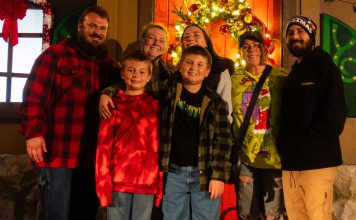The Cañada de los Osos is the only “ecological reserve” of its kind in California, approximately 5,800 acres nestled up against the southern end of Henry W. Coe State Park east of Gilroy and Morgan Hill.
The bear (osos) are long gone, but the mix of hilltops, sweeping grasslands and steep ravines is still there, providing a wide range of woodland, chaparral, riparian and wetland habitats for plants and animals.
For much of the last century, this was cattle country. Cowboys herded thousands of cattle on still more thousands of acres. The ranches became less economical, and as the dust settled, a new preservation consciousness took hold.
Now, on any given day, a hike through the Cañada de los Osos reserve will yield sights or signs of mountain lions, black-tailed deer and wild pigs. Raptors, including golden eagles, nest throughout the region and wintering bald eagles are occasionally seen.
On the first weekend in November, students from Gavilan College and San Jose State University shared the results of recent research projects, a twice-a-year event. The reserve is a giant classroom for undergraduate and graduate students, who for years have contributed to restoration efforts as they study frogs, beetles, snakes or grasses.
The reserve also provides opportunities for youth participation in habitat improvement projects, such as developing water sources for wildlife, tree planting, and setting up a nursery for native plants.
The Department of Fish and Wildlife’s Hunter Education program also holds wildlife and hunter clinics at the reserve on black-tailed deer and wild pigs.
Formerly known as Stevenson Ranch, the property was designated as an ecological reserve by the California Fish and Game Commission in 2003.
A 15-year-old restoration effort led largely by volunteers has dramatically restored the hills and ravines into a kind of hillside Eden, where plants and animal species are rediscovering their primordial ecological balance.
The volunteer caretaker, guide, mentor, protector and advocate for this majestic mix of hills and valleys is Henry Coletto of Gilroy. Coletto is chair of the 10-member board of directors for the Friends of de los Osos Ecological Reserve, which contracts with the Fish and Game Commission to build the area as a one-of-a-kind educational resource, while restoring the native wonders of the grassland hills.
“It’s important to get kids into the outdoors,” he said during a guided tour late last month. “It’s a fantastic area.”
Now retired, Coletto patrolled these hills for decades as one of two game wardens for the Santa Clara County Sheriff’s Department, and before that he hiked and camped in the area as a teenager. He whispers to the wildlife, touches dry grasses with a gentle reverence and navigates the reserve’s dusty one-land roads in the reserve’s donated 4Runner. He’s the guy who will open the gates for just about any group that asks, as long as they understand there are no fires, overnight camps, bikes or motorcycles or pets.
The animals know his white truck. The deer gaze and the quail scurry as it bounces by.
Where thousands of cattle once grazed, the hills are now marked by paths of wild pigs and the matted grass of sleeping black tailed deer.
Cougar and bobcats share predator chores, and at the right times of day tule elk and pronghorn antelope form silhouettes along the ridgelines, at approximately 2,000 feet elevation.
The restoration effort’s success can been seen in all of the various habitats of the reserve. Acres of native perennial bunchgrass spread in waist-high waves where cattle once grazed on planted hay stubble. Steep creek banks and barren watering holes are now sloped, shaded oases, where pigs, deer and other animals find sources of food and water, and wetlands soak up winter rains and collect spring water in arid summers. The natural sources of water are lined by new groves of cottonwoods, and as well as stands of valley oaks.
The return of the natural habitats in the last 15 years has added the sounds and sights of dozens of bird species. Red-tailed hawks circle overhead, eyeing ground squirrels scurrying below, and meadowlark sing and bob and weave along dusty trails. Heads of turkeys poke above the tall grasses, and coveys of quail run along open spaces. The reserve is home to one of the largest regional habitats for the tri-colored blackbirds, who compete for airspace, milkweed perches and singing rights with the more common red-winged blackbirds.
For more information about visiting or volunteering, visit cdlo.org. The Friends of the Cañada de los Osos is a 501(c)(3) tax exempt charitable organization.












